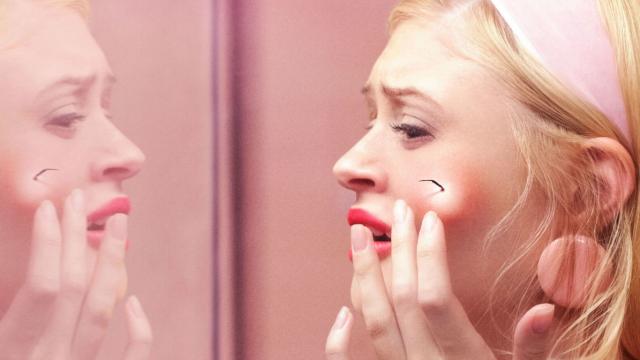For generations, the book series Scary Stories to Tell in the Dark has haunted kids and adults alike. On name recognition alone, the Alvin Schwartz series seems like a perfect choice for a film adaptation.
And yet it isn’t just one story, it’s a lot of stories, which made that process more than a little difficult. We had a chance to speak with producer Guillermo del Toro and director André Øvredal about it.
“The beauty about the book is that each story is self-contained, but that’s the nightmare of adapting it and making it into a film,” the Oscar winner told a group of journalists in Hollywood on Thursday.
Del Toro has loved the series since he was a child, owns some of the horrifying original artwork by Stephen Gammell, and was the driving force behind the upcoming film, which opens in the US August 9.
“I had to come up with a concept that encompassed that theme,” he continued. “We tried to find a period of time in which stories affected everyone. Who we were as humans. What the US was a nation at that moment. And we started to very carefully lay down the pieces to make it thematically relevant to the stories we were telling.”
Del Toro, along with screenwriters Dan and Kevin Hageman, eventually came up with a story set in 1968 about a group of kids in a rural town who happen on a mysterious book that writes itself.
Characters were developed to be in “harmony” with certain stories, according to del Toro, so that everything meshed together into one cohesive film — a film that just so happens to contain multiple Scary Stories.
The question then becomes, obviously, which stories?
Del Toro said the film works in about five or six of the “greatest hits”, such as The Red Spot (obviously), Harold, The Big Toe, and The Dream, to name a few.
“We did American Idol with the stories in the writer’s room,” del Toro said. “We distilled it to about five or six that we liked the most. Some of them are told in their entirety. Some others are referenced.
“Those that know the books will see more than people that haven’t read the book because some of them are there in name, or fused one with another or with a song or a rhyme. But we basically distilled it to the ones that everybody seems to remember the most. The books obviously have many, many more stories so this could go on or not but we’ve said, ‘Let’s do the Greatest Hits.’”
Del Toro, however, is not directing the film. For that job, he hired André Øvredal, who directed Troll Hunter and The Autopsy of Jane Doe and wasn’t familiar with the series when del Toro sent him the screenplay.
“I never heard of them because in Norway they were never released,” Øvredal said. “I fell in love with the screenplay… which was just this kind of Amblin-esque scary movie set in a period that was so exciting.
“It was a unique opportunity to create both a fascinating image of America in the ‘60s as well as a really wonderful story about these characters… with amazing monsters based on a property and a book series that was so beloved in North America, especially.
“It was such a wonderful challenge as a director, as well, to make a movie that lives up to the expectations to both, obviously [del Toro], but also the entire community of people who grew up with these books.”
The other way the film is living up to the expectations of both del Toro and book fans is a heavy focus on practical effects to bring the horrors that have previously only been seen in Stephen Gammell’s iconic drawings to life. That surely isn’t a surprise to anyone familiar with del Toro’s work, but how he went about it may be.
“For me, sculptors are like actors. You cast it,” del Toro said. “So I wanted [sculptors] who could embody the exact feeling on the sculpture [of] the painting… So we used several of the best creature guys in the business to render each of the drawings and bring them to life.”
That may sound simple, however, as del Toro pointed out, there was just something special about Gammell’s drawings that made the process difficult.
“You miss a little bit of the benign,” del Toro said, speaking about building the Pale Lady from The Dream in particular. “What is really scary is how peaceful that character looked. How happy and, at the same time, there’s something empty in the eyes.
“So when you sculpt to that level, you’re sculpting character. It’s not about a creature that has wings and teeth, it’s personality. It was extremely difficult.”
Will all of the hard work — not just in adapting the books, but in crafting the creatures and more — pay off? US audiences will find out August 9 when Scary Stories to Tell in The Dark hits cinemas in the States. An Australian release date has not yet been announced.
